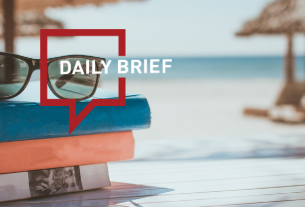OTAs and airlines are well known for sending emails with helpful information and lucrative offers. They constantly remind us that they are there if we need them. But for some reason you rarely see similar messages from hotels.
This is because the vast majority of the hotel’s digital media efforts revolve around securing the booking – very little is done after the booking has been made.
After analyzing more than 50,000 emails sent by hotels, we’ve found some interesting patterns.
Value
Hotels which engage their guests by sending out targeted pre-arrival and post-stay emails, with a follow-up action in a mobile concierge app or self-service portal, can see a multitude of benefits:
1. More personalized guest experience
2. Improved first impression
3. Increased revenue of ancillary services (upselling rooms, services, restaurant, rental, tours)
4. More reviews
Yet many hotels are reluctant to talk to their customers. Some guests are already receiving information from OTAs, and some managers are nervous about sending similar information.
But, OTAs are promoting their own brand with offers from their partners. The hotel’s goal is to make guests feel welcome to their property and highlight all the special features compared with the OTAs’ cookie-cutter approach.
Luckily, with a proper communication strategy, these issues can be addressed.
Tips for successful communication strategy
1. Understand your guests’ digital journey.
What are the expectations in pre-, during- and post-stay stages? Your goal is to strike a balance between your needs as a hotel and your guests’ needs. For example, in the initial pre-stay contact you might want to upsell products and services, but guest might be more interested in detailed directions about how to get to your hotel or reassurance about parking.
The key to success is targeted actions. Don’t just send out nice content, send out content that leads to a specific action: order, review, book, share, ask help etc.
2. Message size
We have surveyed the engagement ratio of emails from many hotels and the rule of thumb for length is, less is more. If you keep it under 1500 characters and put additional content on the external page, it will be easier to read without lengthy scrolling, particularly on phones.
One of our customer’s management board insisted on having a whopping 4500 character welcome text. After few months live, we can see their performance stats are lower than the industry average.
Our results show approximately 600 characters works for the best. Adding images is highly recommended as it is visually more appealing and emotional.
3. Personalization and language
Always personalize all communication and use guests’ native language if possible. Receiving emails with a generic “Hello guest” does not leave a good impression. We suggest to our customers that if more than 10% of your guests speak a different language to your native tongue, start thinking about localizing content for these guests.
4. Layout
This should go beyond saying, but still too many emails are not tested at all on different devices. If the email looks great in your Outlook and on your latest iPhone, that does not mean it looks great everywhere. Use your co-workers for testing to get quick feedback.
5. Schedule
Here at Guestjoy, we have tested many different patterns, but for pre-arrival email usually three days in advance works the best and for post-stay email two days after departure.
Try to target your emails in the morning, although this can be tricky as your guests are coming from different timezones.
Some of our customers send pre-arrival emails as soon as the booking has been made. This has lower engagement ratio but, surprisingly, it does convert as some guests are willing to book services as early as three months in advance.
6. Measuring success
There are three main metrics you must track.
1. Open ratio – How many of the guests actually open your email. A good figure is 60%.
2. Click ratio – How many of the guests actually click on a link within your email. A good figure is 30%.
3. Action ratio – How many guests perform the desired action. A good figure is 10%.
However, this can vary significantly depending on the complexity of the offer, if you want a simple review or if you want guests to fill in a long questionnaire.
One constant we have seen is that action ratio drops significantly if guests need to re-enter personal data which you should already have within your system.
Here is a short summary of the analysis we made in infographic form:
Summary
Creating good looking and informative emails can seem like a daunting task at the beginning, but in reality it can be really easy to get going. Most PMS’s have rudimentary capabilities.
If this is not sufficient, there are professional service providers. The key is to start slowly. Most hotels do not realise they are sitting on a gold-mine of guest data.
Read original article




